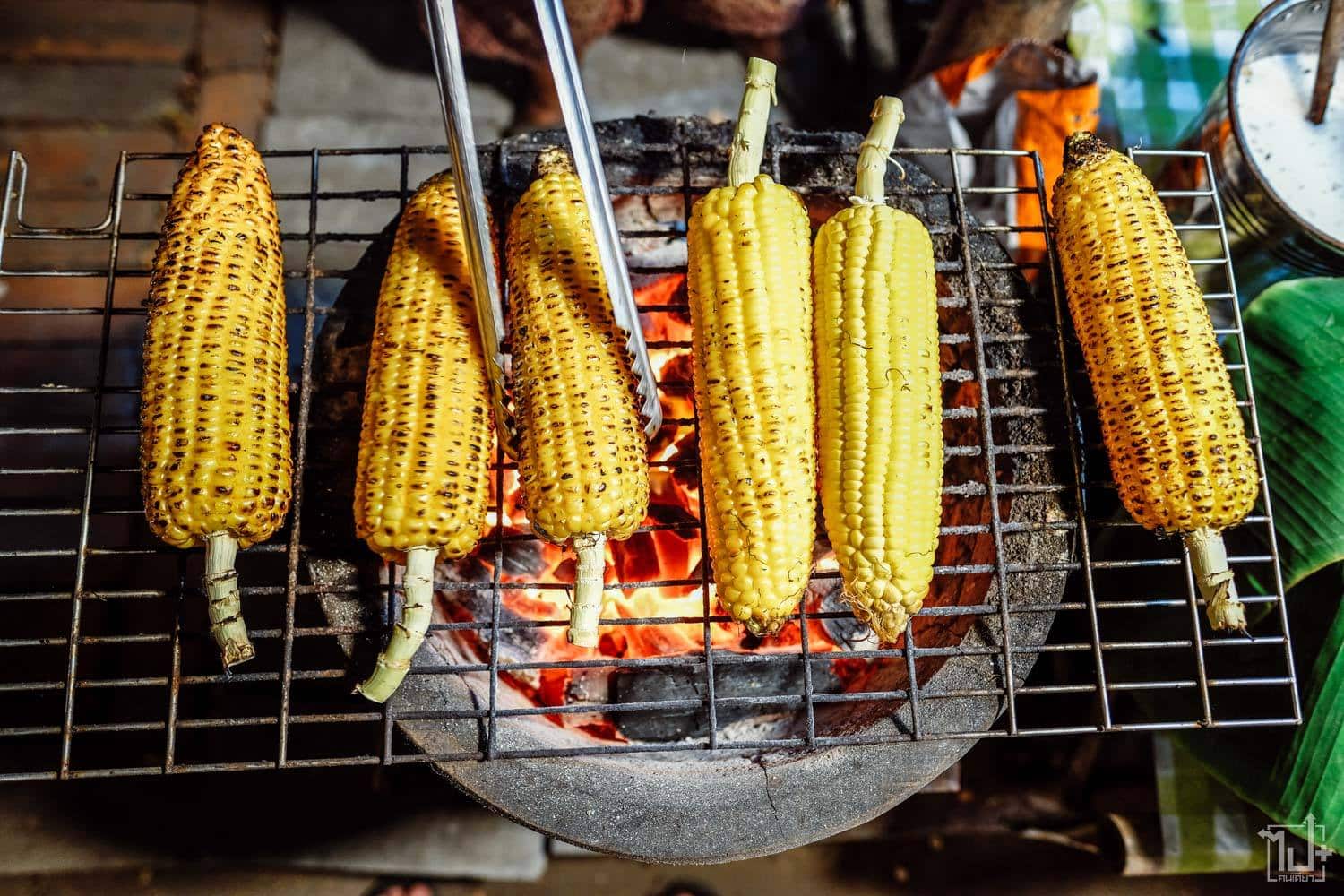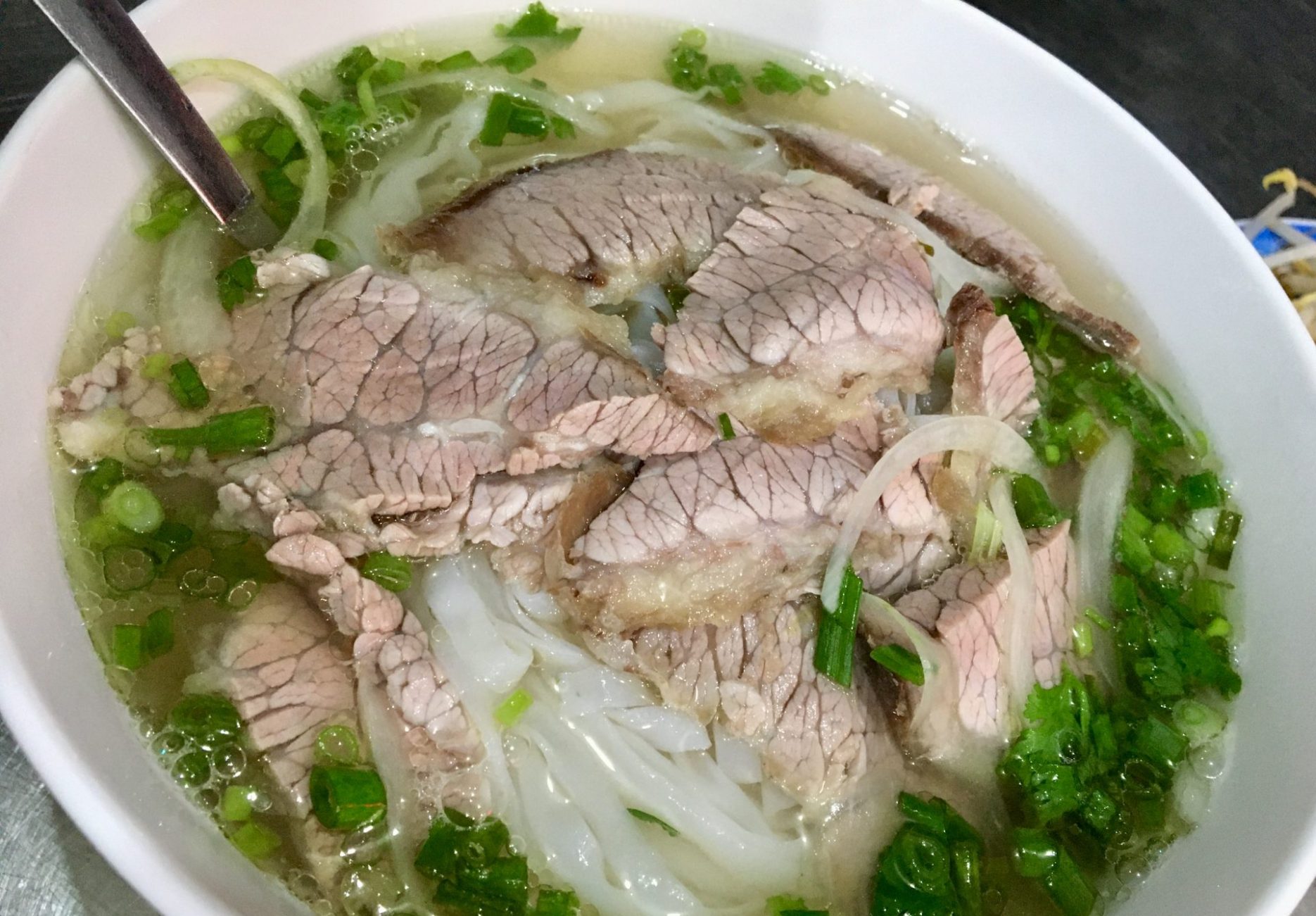Bun rieu, a dish deeply rooted in Northern Vietnam’s culinary traditions, was recently honored as one of the 100 best crustacean-based dishes in the world. Ranked 44th in the list released by the renowned culinary website TasteAtlas in mid-November, this Vietnamese vermicelli soup with rice field crab has earned international recognition.
While bun rieu is enjoyed across Vietnam, the Old Quarter of Hanoi is home to some of the finest versions of this beloved dish. In the bustling heart of the capital, a bowl of bun rieu is more than just a meal – it is an art form, carefully crafted and steeped in tradition.
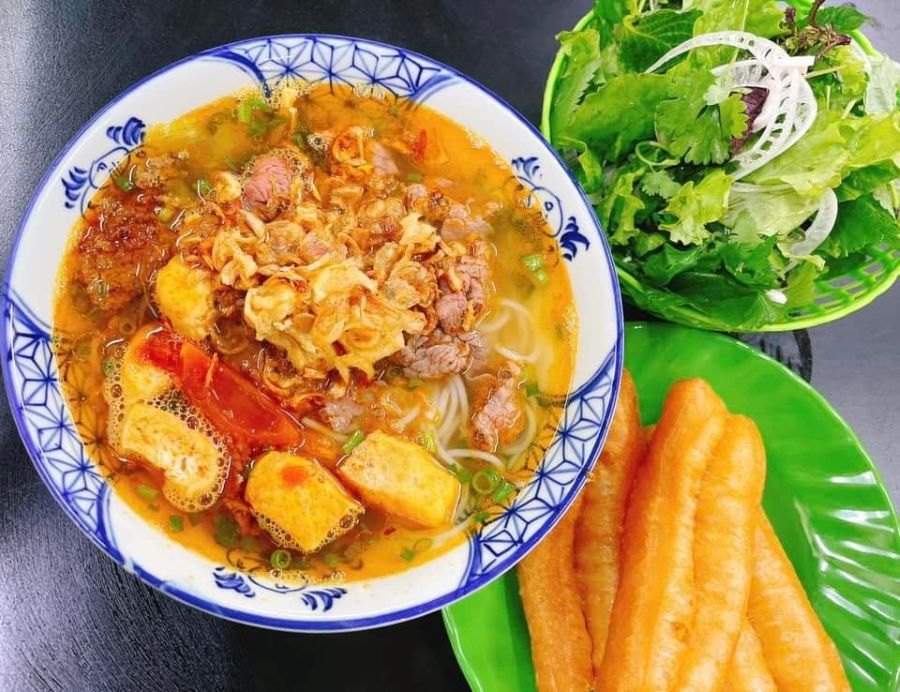
A typical bowl is a feast for the senses. The rich yellow-brown crab fat glistens against the bright red of simmered tomatoes, all cradled by the delicate white strands of vermicelli. The flavor is equally captivating, with the unmistakable notes of freshwater crab, tangy vinegar, and aromatic spices blending into a harmonious, slightly sour broth.
Hanoians are famously discerning when it comes to food, valuing authenticity as much as taste. This standard is evident in the preparation of bun rieu, where every ingredient is meticulously chosen.
The star ingredient – freshwater crab – must meet exacting standards. Only shiny, dark gray crabs with strong, intact claws and firm aprons are considered. Male crabs provide tender meat, while females contribute the prized gach cua (crab tomalley). After selection, the crabs are washed, ground, and strained to create the rich base for the broth.
Cooking the broth requires patience and precision. It is simmered gently with salt, constantly stirred to prevent the crab meat from sticking or burning. Once the meat rises to the surface, it is carefully removed and set aside.
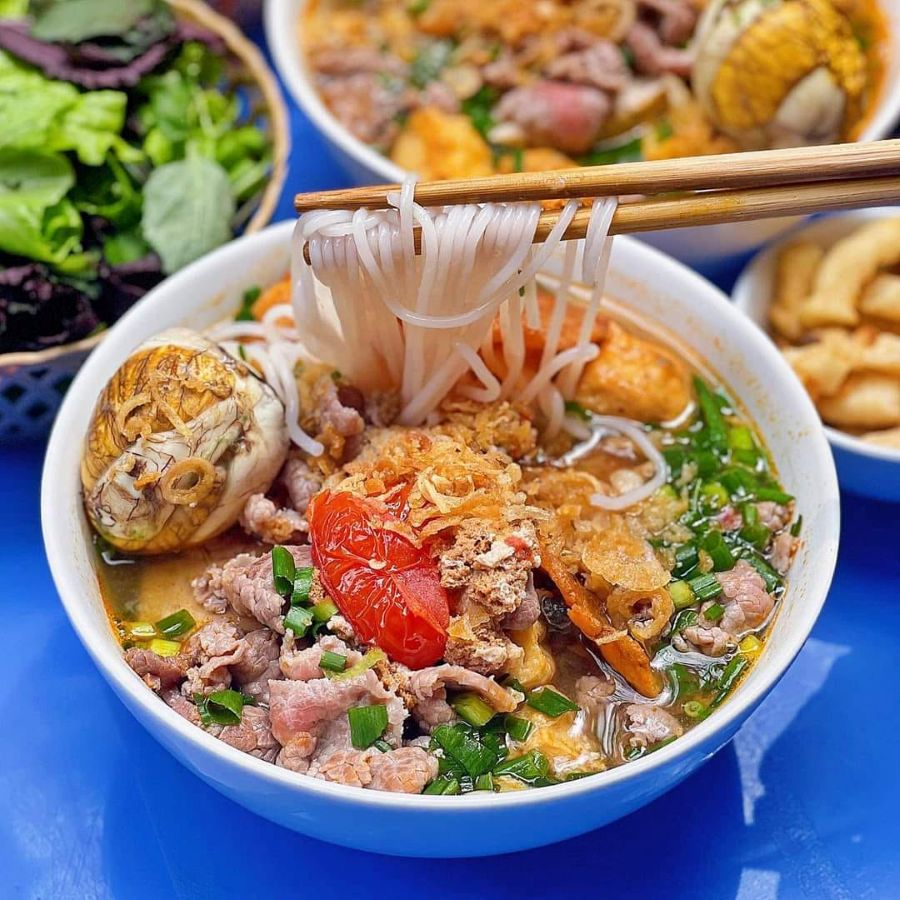
The tomalley is treated with equal care. Fried shallots form the aromatic base for a mixture of crab fat, a dash of annatto oil for color, and simmered water, all of which are later incorporated into the broth for an extra layer of flavor.
Tomatoes play a dual role in this dish, contributing both color and flavor. Some are finely chopped and sautéed, then sieved into the broth, while others are sliced into wedges and added later for texture. Quality concentrated vinegar imparts the signature tartness, while simmered chili paste provides a gentle heat, balancing the overall flavor profile.
When assembled, a bowl of bun rieu features a bed of silky vermicelli topped with crab meat, simmered chili, green onions, and a ladle of hot, fragrant broth. A final flourish comes in the form of shrimp paste, which adds complexity and depth.
A serving of bun rieu would be incomplete without a side of fresh herbs and vegetables. While traditional versions included chopped corn salad, today’s servings often feature lettuce, marjoram, Vietnamese coriander, basil, bean sprouts, and shredded banana blossom. This medley of greens complements the dish’s richness, offering a refreshing contrast.
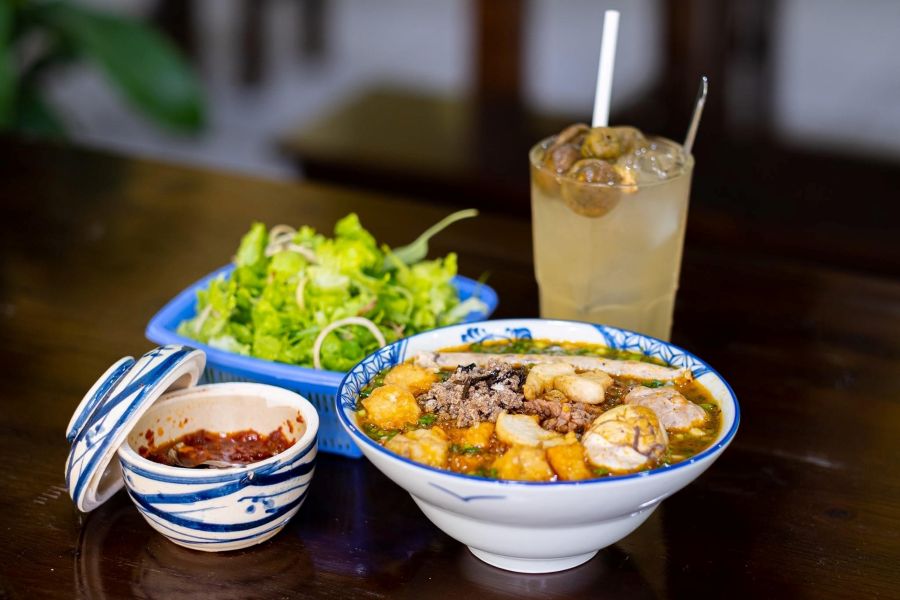
The late writer Vu Bang, in his book titled “Hanoi’s Delicacies”, painted a vivid picture of bun rieu:
“Glossy rice noodles with hot crab meat glistening in purple crab fat, dotted with golden flecks and bright red tomato pieces… Add a dash of shrimp paste and shredded young lettuce – this rustic dish exudes a charm that no one can resist.”
Though the dish has evolved with the addition of fried tofu, rare beef shank, or even snails, its soul remains unchanged. Nowhere is this more evident than in the Old Quarter, where vendors prepare bun rieu the traditional way.
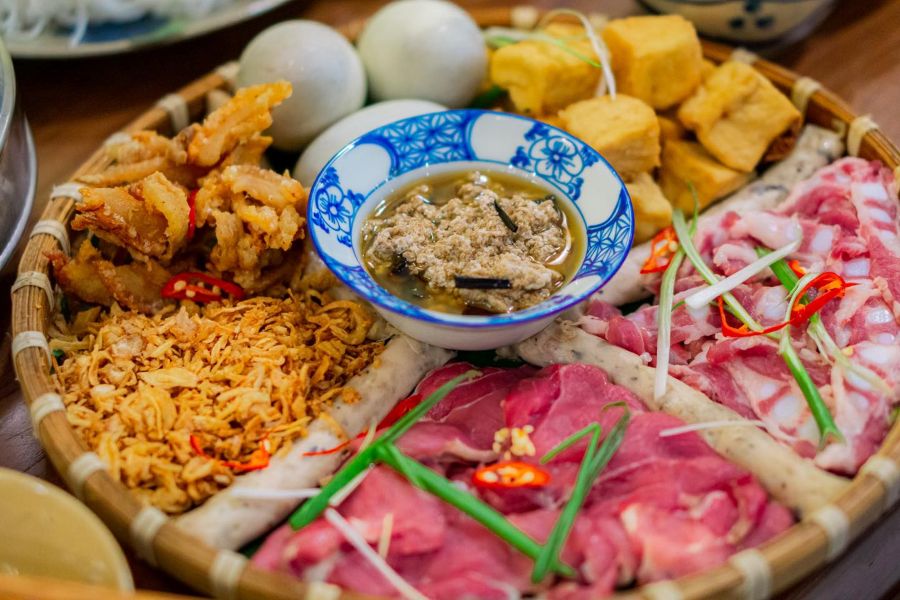
To experience the finest bun rieu, visitors should seek out these beloved spots in Hanoi’s Old Quarter:
Bun Rieu Co Dung: 18 Nguyen Sieu Street, Hoan Kiem District
Bun Rieu Ba Diec (Mrs. Deaf’s Bun Rieu): 68 Nguyen Thiep Street, Hoan Kiem District
Bun Rieu Oc Co Minh: 42 Ly Thuong Kiet Street, Hoan Kiem District
Bun Rieu Co Hoan: 16 Hang Luc Street, Hoan Kiem District
Bun Rieu Co Huong Beo: 68 Hai Ba Trung Street, Hoan Kiem District
Sitting on a plastic stool by the roadside, savoring steaming hot bun rieu while the city hums around you, is an experience uniquely Hanoi. It’s a flavor, a moment, and a memory that stays with you forever.


